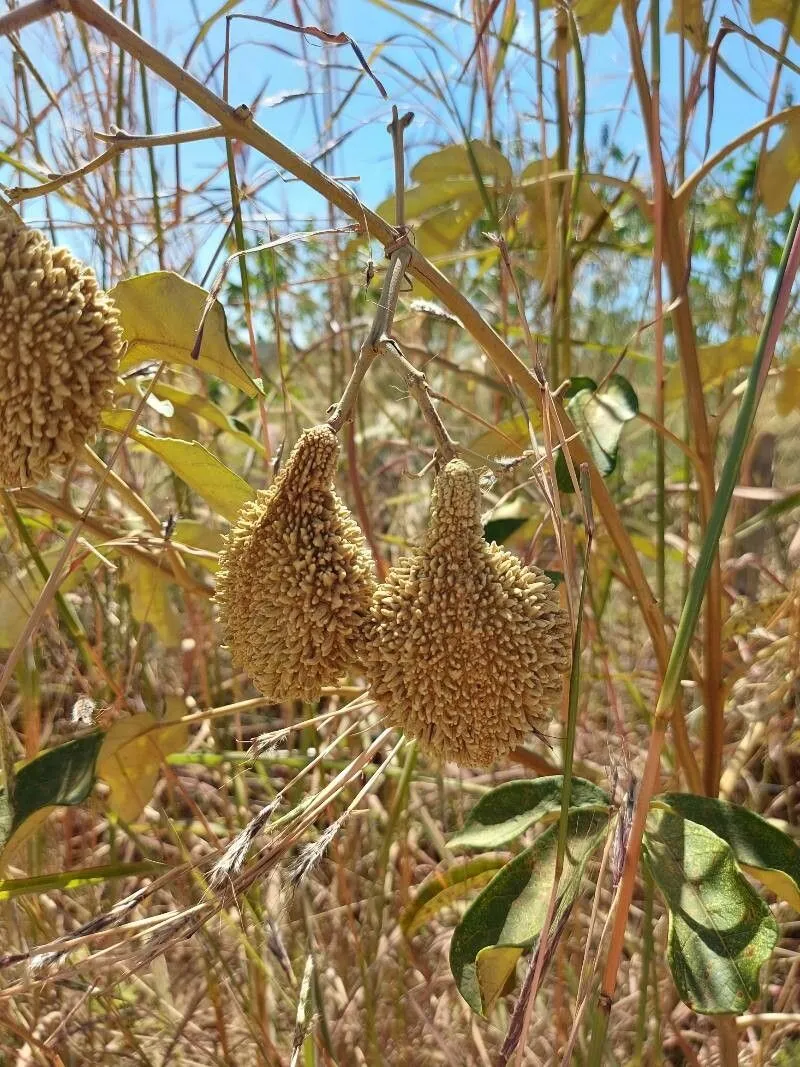
Author: (L.) L.G.Lohmann
Bibliography: O.Hokche, P.E.Berry & O.Huber (eds.), Nuevo Cat. Fl. Vasc. Venezuela: 270 (2008)
Year: 2008
Status: accepted
Rank: species
Genus: Amphilophium
Vegetable: False
Observations: Mexico to Trop. America
The Monkey Comb, scientifically known as Amphilophium crucigerum, is an intriguing plant species renowned for its unique characteristics and widespread presence in tropical regions. Classified under the family Bignoniaceae, this plant boasts a notable lineage and significant botanical interest.
Endemic to a vast region stretching from Mexico through Tropical America, Amphilophium crucigerum thrives in diverse climatic conditions. Its adaptability enables it to flourish in several habitats, contributing to its widespread distribution.
The plant is identified by its distinctive features, including its intricate leaf structure and robust climbing habit. The striking appearance of its foliage and the intricate nature of its vine make it a captivating subject for botanists and plant enthusiasts alike. The common name ‘Monkey Comb’ is derived from its peculiar, comb-like fruit, which captivates observers and adds to the plant’s unique allure.
Amphilophium crucigerum’s role in the ecosystem is multifaceted. It provides shelter and nourishment to various wildlife, thereby playing a crucial role in maintaining ecological balance. Additionally, it holds value in local cultures and traditions, often being utilized for its ornamental properties or in traditional medicinal practices.
The taxonomic classification (L.) L.G.Lohmann highlights the detailed work of botanists who have meticulously categorized this species, contributing immensely to our understanding of its lineage and botanical significance. Reference to the comprehensive study by O.Hokche, P.E.Berry, & O.Huber in the “Nuevo Catálogo de la Flora Vascular de Venezuela” underscores the importance of this species within the rich biodiversity of the region.
In summary, the Monkey Comb (Amphilophium crucigerum) is a remarkable plant species, celebrated for its distinctive attributes and ecological significance. Its presence from Mexico to Tropical America showcases its adaptability and importance within various ecosystems, cementing its place in botanical studies and natural heritage.
Eng: monkey comb, monkey’s-comb
Spa: peine de mico
Por: pente-de-macaco
En: Monkey comb, Monkey’s-comb
Pt: Pente-de-macaco
Es: Peine de mico
© copyright of the Board of Trustees of the Royal Botanic Gardens, Kew.
© copyright of the Board of Trustees of the Royal Botanic Gardens, Kew.
© copyright of the Board of Trustees of the Royal Botanic Gardens, Kew.
Taken Aug 10, 2022 by Ponce Rafael (cc-by-sa)
Taken Mar 13, 2022 by Cadore Paulo Ricardo (cc-by-sa)
Taken Aug 21, 2021 by Rodrigo Egea (cc-by-sa)
Taken Jul 25, 2021 by Trap Hers (cc-by-sa)
Taken May 28, 2022 by Pereira de Sousa Ivonei (cc-by-sa)
Taken Nov 13, 2022 by Rhamos Nancy (cc-by-sa)
Taken Nov 13, 2022 by Rhamos Nancy (cc-by-sa)
Taken Nov 13, 2022 by Rhamos Nancy (cc-by-sa)
Taken May 22, 2022 by Consolo Valeria (cc-by-sa)
Taken Nov 28, 2021 by Wohlers Pedro (cc-by-sa)
Taken Dec 26, 2021 by Makoto Makoto (cc-by-sa)
Family: Myrtaceae Author: (F.Muell.) K.D.Hill & L.A.S.Johnson Bibliography: Telopea 6: 402 (1995) Year: 1995 Status:…
Family: Rubiaceae Author: Pierre ex A.Froehner Bibliography: Notizbl. Bot. Gart. Berlin-Dahlem 1: 237 (1897) Year:…
Family: Sapindaceae Author: Koidz. Bibliography: J. Coll. Sci. Imp. Univ. Tokyo 32(1): 38 (1911) Year:…
Family: Asteraceae Author: A.Gray Bibliography: Pacif. Railr. Rep.: 107 (1857) Year: 1857 Status: accepted Rank:…
Family: Fabaceae Author: Medik. Bibliography: Vorles. Churpfälz. Phys.-Ökon. Ges. 2: 398 (1787) Year: 1787 Status:…
Family: Aspleniaceae Author: (Cav.) Alston Bibliography: Bull. Misc. Inform. Kew 1932: 309 (1932) Year: 1932…